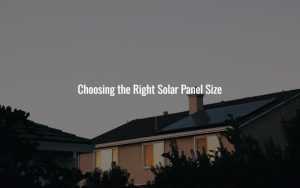What Are the Specifications of a 250 Watt Solar Panel?

If you are looking for a 250 watt solar panel, you might find it useful to check the specifications of such a solar panel. The best ones will produce between 750 and 1,250 watts per day, which is sufficient for most residential needs. These panels also have a higher controller rating of 30A, so you will have no trouble using them. You can also choose to buy a set of four to cover your entire roof.
The Specifications of a 250 Watt Solar Panel
750 – 1,250 watt-hours of energy per day
One solar panel can produce as much as 750 watt-hours of energy a day. This is enough energy to run a standard household appliance for an hour. During cloudy days, electricity produced from the panels may be as low as 0.24 kWh per day. On average, an American home uses 29 kWh of electricity per day. A solar panel system of 20 panels, each of 250 watts, could produce up to 30 kWh in six hours of sunshine. That would be enough electricity to run the average home for one day.
The best
The best solar panels for your home will be between 250 and 500 watts. While a 500 watt panel will generate more power than a 250 watt panel in Arizona, the average solar system will produce around 750 – 1,250 kW per day. A 250 watt solar panel will power a phone and can charge two 50-Ah batteries.
Exact output
The exact output of a solar panel depends on many factors, including location, climate, and sunlight hours. A 250 watt panel can produce between 750 – 1,250 kWh per day. It’s important to consider the total number of AC loads you plan to power, as the output will depend on the capacity of your charge controller and inverter.
8.32 amps
To calculate the amount of amps a 250 watt solar panel can produce, you should divide the total wattage by the rated amp hours of the batteries. In this example, you would need 4 300-amp-hour deep cycle batteries. The highest-rated deep-cycle battery is Vmaxtanks. For more information on the cost of batteries, read the manufacturer’s description of each battery type.
8.32 amps at peak
A solar panel of 250 watts will generate up to 8.32 amps at peak, depending on the amount of sunlight falling on it. The power output is sufficient to power cell phones, tablets, cameras, drones, and other small appliances. If you use an inverter, you can convert the energy produced by the solar panels to AC power. A typical 250 watt panel produces about 75 watts per day.
30A controller rating
Usually, excess wattage is not a problem, as long as it does not exceed the voltage rating of the controller. For example, a 100W solar panel has an open circuit voltage of 18 volts, while most controllers can handle up to 45 volts. When connected in series, two 100W panels produce 36 volts, doubling their amps. In this case, the solar panel can still charge a 12 volt battery.
Capable of generating about 20.8 amps
A 250 watt solar kit is only capable of generating about 20.8 amps from a 12V system. It is also not 100% efficient, but you should still be able to generate at least fourteen to fifteen amps. A 20A charge controller is usually sufficient for a 250 watt solar panel, but a 30A controller can be a better choice if you want to add more solar panels in the future.
Suitable for installations
A 250W solar panel is a great option for most homes and is suitable for installations anywhere, as long as it is placed in a sunny area. It will withstand high winds, rain and snow, and is easily mounted with predrilled holes. For optimal performance, you will also need a power inverter and a leisure battery. The 30A PWM solar charger is a cost-effective and high performing system that will let you build a 250W solar system.
4 panels
When choosing the correct battery for four 250 watt solar panels, there are a few things to consider. A lead acid battery may be sufficient if you only need one panel, but you should keep in mind the limitations of this type of battery. Lithium batteries are better for a battery bank that houses several 250 watt solar panels, but they can quickly drop to 50%. As a result, recharging them often can be a hindrance.
Efficient and last longer
Monocrystalline panels tend to be more expensive than polycrystalline ones, but are also more efficient and last longer. If you want the most bang for your buck, choose the monocrystalline type, but don’t forget to factor in the cost of regular maintenance. You’ll save about $150 per year and be free of energy bills for the rest of your life. However, if you want to reduce your monthly expenses, polycrystalline is the better choice.
Produce 750 to 1,250 watt-hours
The maximum power a single 250 watt panel can produce depends on the amount of sunlight it receives. In sunny conditions, a single panel may produce 750 to 1,250 watt-hours of energy per day, depending on the time of day and the intensity of sunlight. A single 250 watt solar panel can charge two 50-Ah AGM batteries and charge a smartphone or other electronic device. However, if you need to use a lot of energy, you may need to install a larger solar power system.
The HQST 250 watt solar panel
The HQST 250 watt solar panel weighs 5 pounds, and provides 80% of the power needed for a 12-volt battery. It is compatible with most mounting systems and includes pre-drilled holes for easy installation. It comes with a corrosion-resistant aluminum frame and IP65 rated waterproof junction box. It is ideal for off-grid living and is an ideal choice for camping and off-grid living.
Very easy to install
This panel is very easy to install and is made with high-efficiency polycrystalline cells that produce a steady 600-volt current in full sunlight. The 36 highly efficient polycrystalline cells are protected by tempered glass for optimal performance. The panels are connected via a junction box on the back, which includes bypass diodes. It is an excellent choice for anyone who wants to be independent of the grid while providing maximum power generation.
The HQST 250 watt solar panel
The HQST 250 watt solar panel is no longer manufactured, but the design remains the same. It uses an outdated design, and has not evolved with modern solar panel technology. It is also missing half-cut cells, which help the panels operate better under shade and boost power output. Despite these limitations, the HQST 250 watt solar panel is still a popular choice for off-grid systems. Solar panel kits are also increasingly popular.
The Renogy 250 watt solar panel
The Renogy 250 watt solar panel is made with advanced encapsulation materials and multi-layered sheet laminations to ensure optimum performance and durability. Its IP68 junction box and IP67 solar connectors are perfect for off-grid applications. Its mounting accessories include ground mounts, Z Brackets, pole mounts, and corner brackets. In addition, its high mechanical loading resistance means that it can withstand up to 5400 PA snow load and 2400 PA wind load.
The Renogy 270 watt solar panel
The Renogy 270 watt solar panel is another great option. It is lightweight but not overly large, and its pre-drilled holes make it easy to install. These panels are ground-mount compatible and have a warranty of up to 25 years. They can save you up to $150 per year on energy bills and regular maintenance. These panels can also be installed on a flat roof or other structure.
The wattage of a solar panel
The wattage of a solar panel is its maximum power output. The maximum output is influenced by various factors such as geographic location, shading, angle of installation, and panel temperature. Regardless of the panel wattage, it should generate at least one kilowatt of electricity per day. Depending on where you live and the angle of installation, a single 250-watt panel will not provide you with enough energy to offset or eliminate your electric bill completely.
![]()





